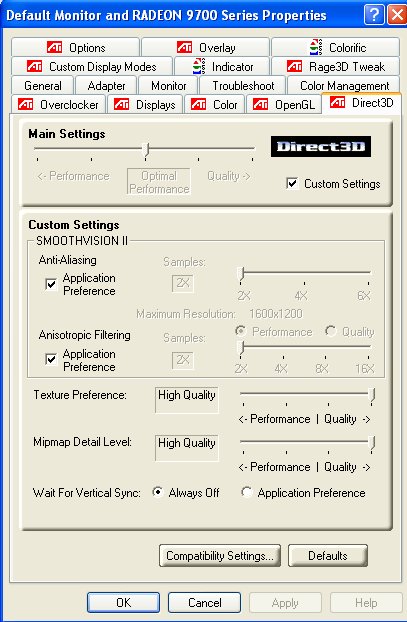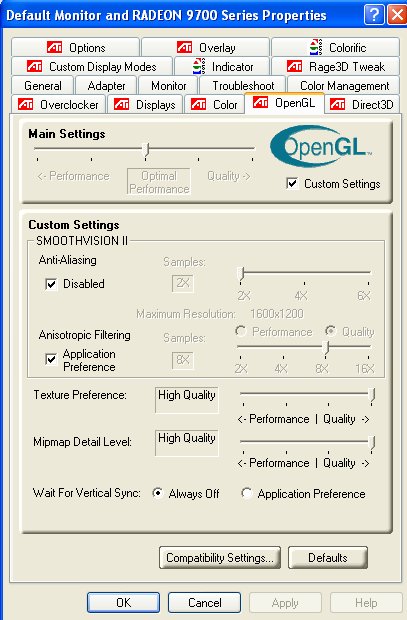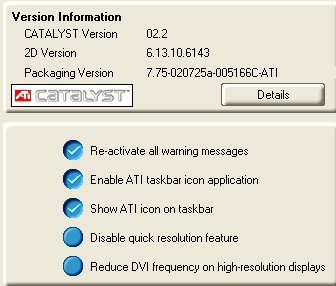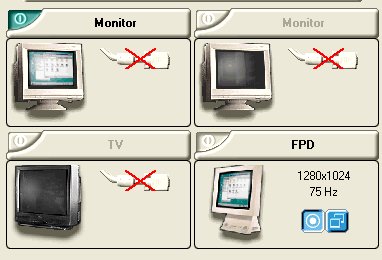Drivers and Display
Video card drivers, often considered the Achilles heel for ATi, are now grouped under the name of Catalyst. The accompanying driver CD contained the Catalyst 2.2 drivers (6143). Installation of the card was a breeze with no untoward incidents to report. Once all installed, we are presented with the following control panel options.

Please note that the Colorific, Indicator, Rage3D Tweak, and Overclocker tabs were added by me for further testing / overclocking reasons. The setup is pretty solid with intuitive controls. You can set D3D to one of 5 pre-defined options depending upon how you wish to play a game, or you can manually set the options below. The anisotropic filtering can either be set to performance (bilinear), or quality (trilinear).
One idiosyncrasy of the settings was a strange occurrence whereby changing settings worked fine, but I couldn't restore them to the absolute defaults without rebooting. I'm not sure if this is an isolated issue or a larger problem.

The OpenGL settings are similar, too.

The drivers in question.
Hydravision
Hydravision, ATi's multiple display utility, is included in the driver package.

I connected it up briefly to see if I could use 2 displays at one time (not shown above). It seemed to be a relatively simple affair, too. I'll delve into all the extra benefits that a Radeon 9700 possesses in a follow-up article shortly. Suffice to say, that a 21" flat CRT and a 17" TFT LCD seemed happy as desk partners.

If you've kept a close eye on my graphics card reviews, you'll most likely know that I'm rather particular about the 2D quality of my cards. Sure, I play a few games like the rest of you, but I spend most of my time in Windows. ATi have historically had excellent 2D in the past, and the Radeon 9700 is no exception to this rule. The clarity and definition of text at 1920x1440x32, on the Sony CRT, was excellent. Similarly, the TFT, when run via its preferred DVI connection, left little to be desired.









